► Electric, seven-seat Hyundai SUV driven
► We explore South Korea in brand’s flagship
► Expected starting price of £65k
Who’d have thought Hyundai, even as its meteoric rise continues, would ever challenge the likes of Volvo and Range Rover? If I’ve just made you scoff at that statement, allow me to explain as I navigate South Korea in the brand’s new, all-electric flagship Ioniq 9 SUV.
At a glance
Pros: Cool, calm and comfortable; distinctive; hugely flexible interior, good range
Cons: Infotainment screen is busy; brakes could be stronger
What’s new?
This is Hyundai’s latest Ioniq-branded car, with its number dictating that it’ll likely be the biggest one it makes. The original vision spawned from the Seven Concept – an early nod to this being called the Ioniq 7, before Hyundai’s team decided to nudge the number up to give the model range some space to breathe and allow for a wider range of future models.
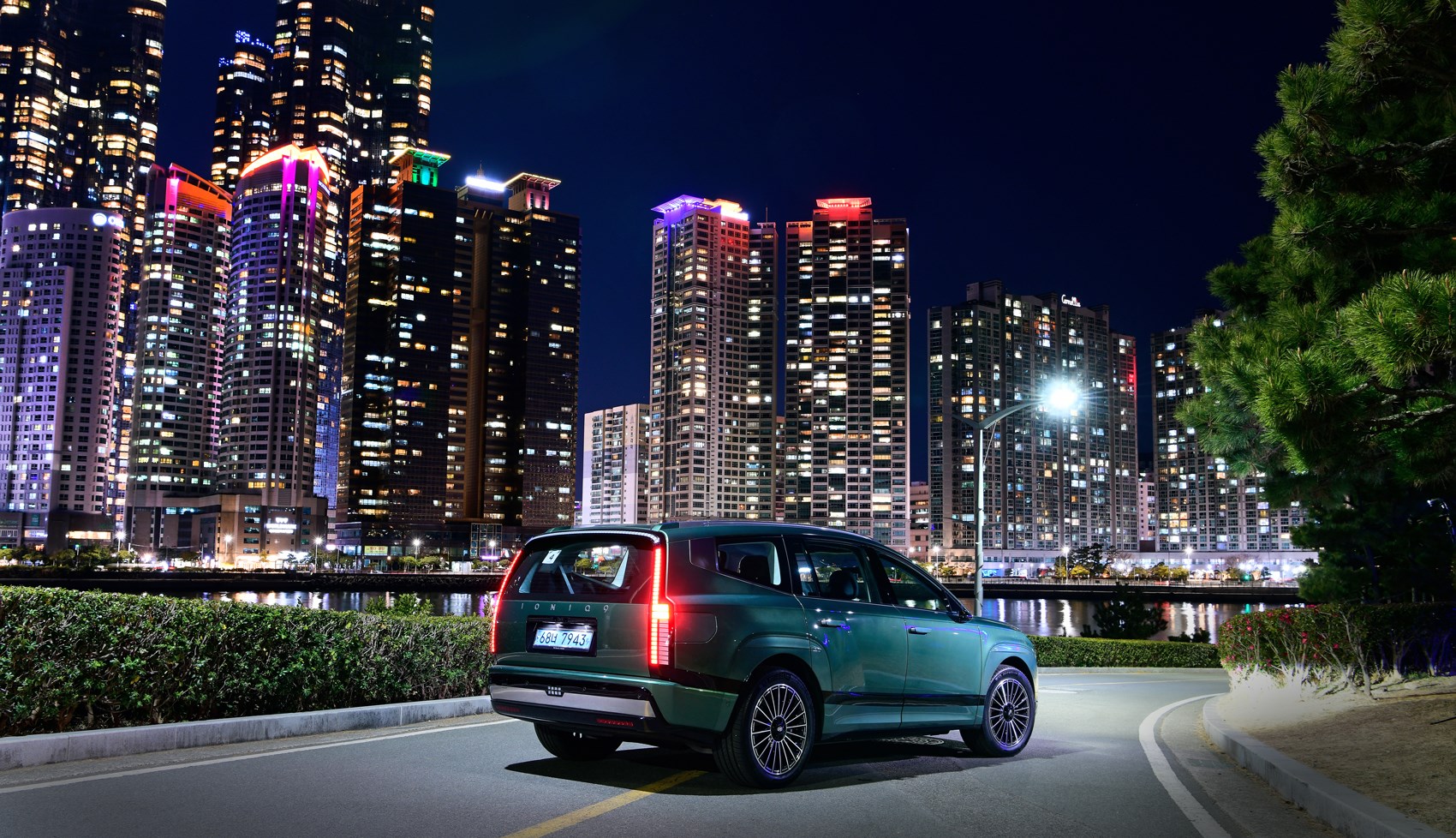
It still looks familiarly like an Ioniq car, mainly thanks to details like the ‘parametric pixel’ lighting designs front and rear. At the front, the DRLs have a properly Space Invader-spec retro vibe and, when the rear brake lights are applied, there’s a neat single band of red light that wraps around the whole of the tailgate. It’s a look that may need a little time to absorb and feels colour dependent, but it looks distinctive and different in a sea of blob-ish cars of a similar size.
What are the specs?
The Ioniq 9 measures in at 5060mm in length, 1980mm in width and 1970mm tall. That makes it even longer than Kia’s EV9 – the Hyundai’s direct sibling – and the Volvo EX90. It’s all about the space inside, though, with Hyundai also says it has the longest wheelbase of any production car the brand has ever built, at 3170mm.
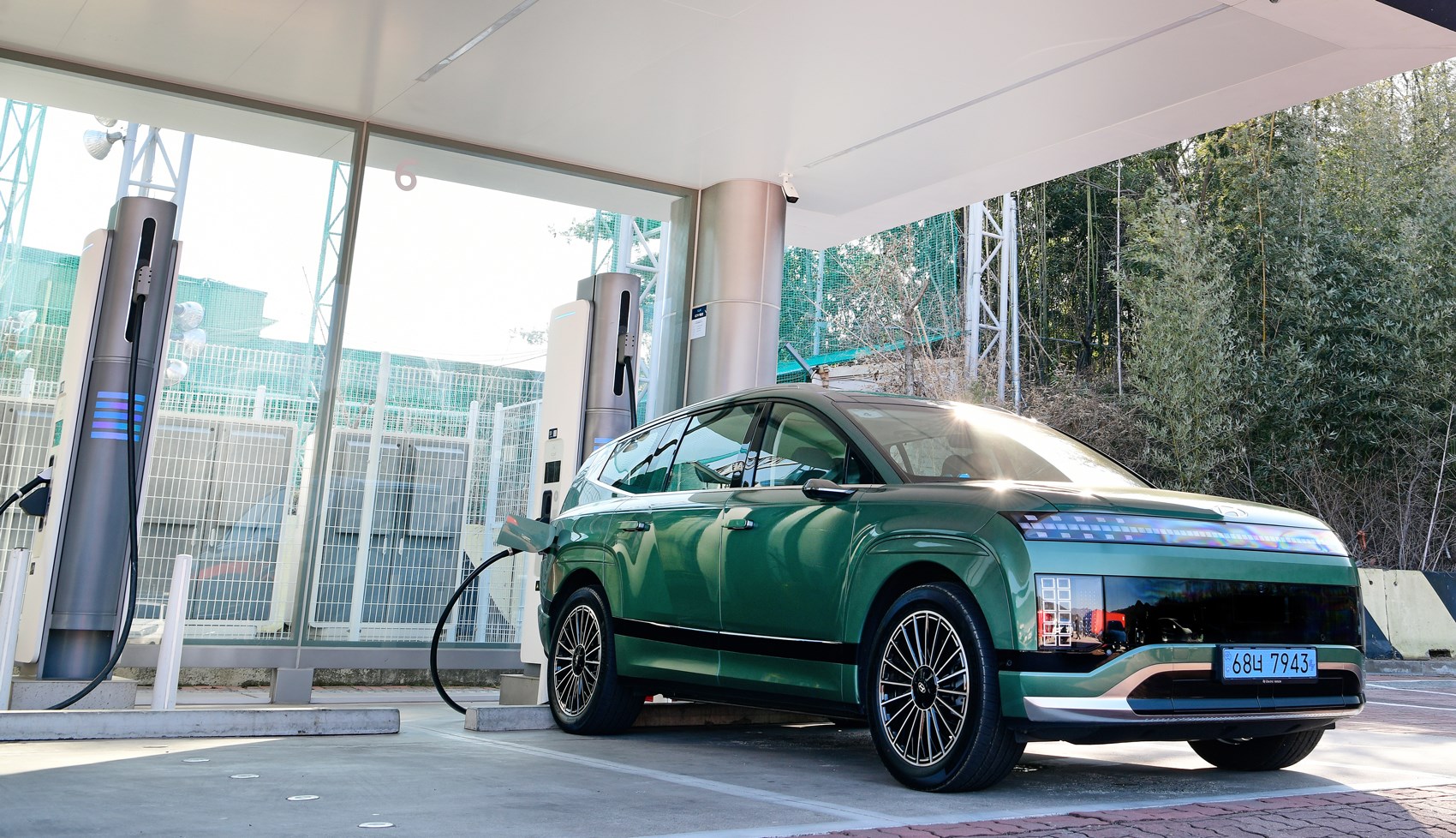
Hyundai has confirmed three specifications for the Ioniq 9, which have quite self-explanatory names. Every version features a huge 110.3kWh battery pack and, due to Hyundai’s E-GMP platform underneath, allows for up to 350kW of DC charging.
Long Range RWD
Power output: Single e-motor, 215bhp, 258lb ft
0-62mph: 9.4sec
Top speed: 124mph
Claimed range: 385 miles
Long Range AWD
Power output: Two e-motors, 309bhp, 446lb ft
0-62mph: 6.7sec
Top speed: 124mph
Claimed range: 350 miles (est)
Performance AWD
Power output: Two e-motors, 429bhp, 516lb ft
0-62mph: 5.2sec
Top speed: 124mph
Claimed range: 320 miles (est)
For now, these are the only performance variants confirmed, and we’ve only driven the flagship AWD Performance. Will there be a full-fat Ioniq 9 N? Simon Loasby, senior vice president and head of Hyundai design, says maybe; ‘we feel our brand can stretch that far,’ he tells me, ‘and I think the progression for N will be to tap into more sophistication with the performance, and here we have a car that is super sophisticated.’
UK trims aren’t entirely confirmed yet, but we can assume a spec walk-up much like the Santa Fe SUV – another Hyundai SUV we’re a big fan of. That almost certainly means trim variants starting at Premium and including Ultimate and Calligraphy flagship versions – with increasingly sophisticated equipment on board. That said, we could see an Ioniq 9 N Line model, matching the Ioniq 5 and recently-revealed new Ioniq 6 N Line versions.
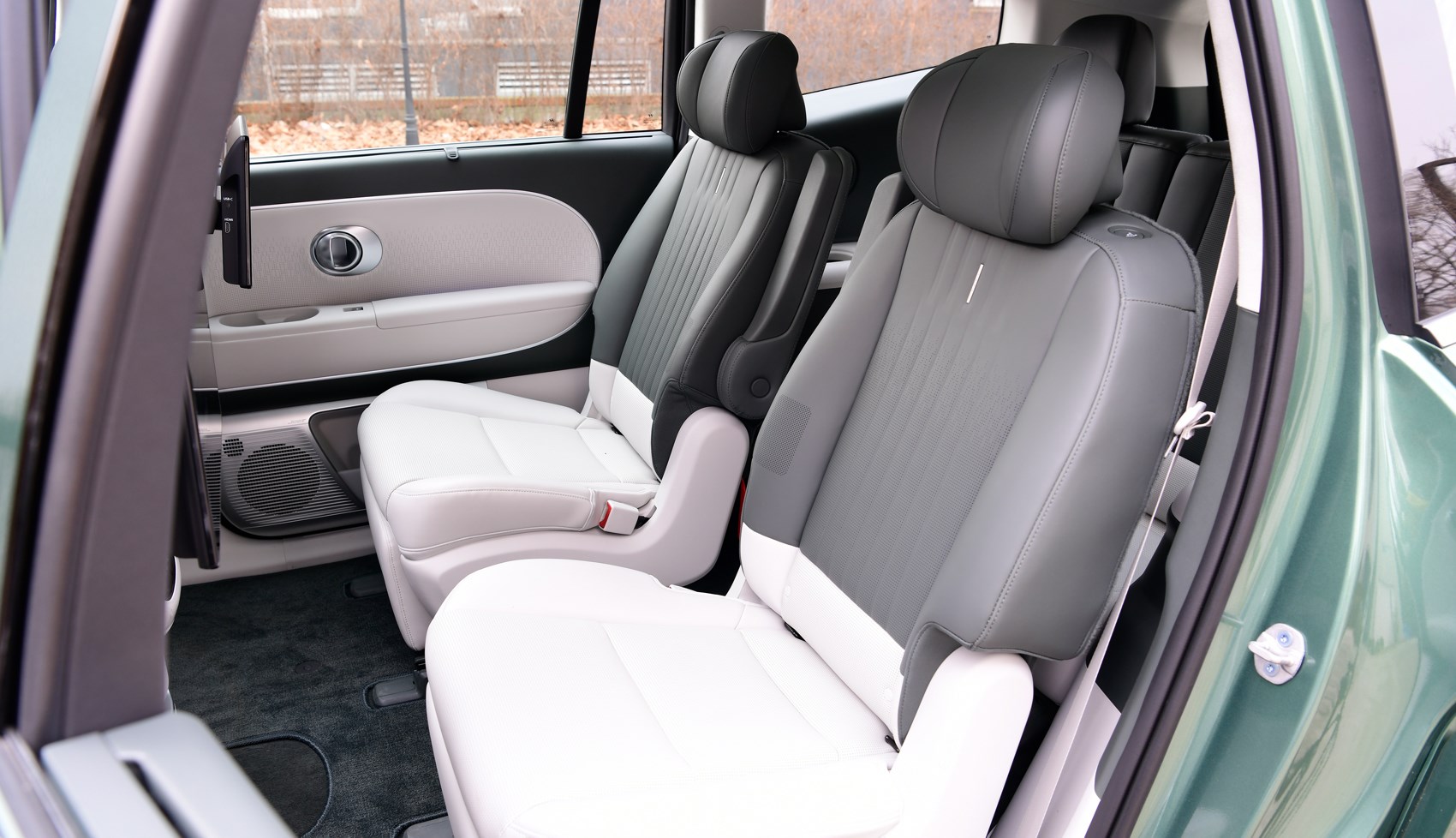
Besides that, you’ll be able to choose from a standard seven-seat SUV version and a six-seat model (pictured, and likely at an extra cost) that chucks out the second row bench seat for two captain’s chairs. Those individual seats in the second row can be equipped with full recline and massage functions, as well as
What’s it like to drive?
Naturally, this isn’t a rorty i30 N from Hyundai; the Ioniq 9 is built to be a big, comfy cruiser – a squishy armchair with wheels that you can sink into and relax.
Overall, the ride quality is impressively well balanced. There’s a plumpness to it, but I’d argue calling it ‘firm’ wouldn’t be the right word. Driving over a deep rut or manhole cover? Yes, the car will jolt (ours rides on 21-inch wheels) but at cruising speed on the motorway or on slower roads with dimpled imperfections, the Ioniq 9 manages to smooth over many of those without much interruption. We wouldn’t mind if the 9 had a smidge less body roll but, again, this is a big car with a lot of weight to manage. By comparison, a Kia EV9 (particularly in GT Line spec) feels crashy and jittery more of the time when you’re behind the wheel – none of that here.
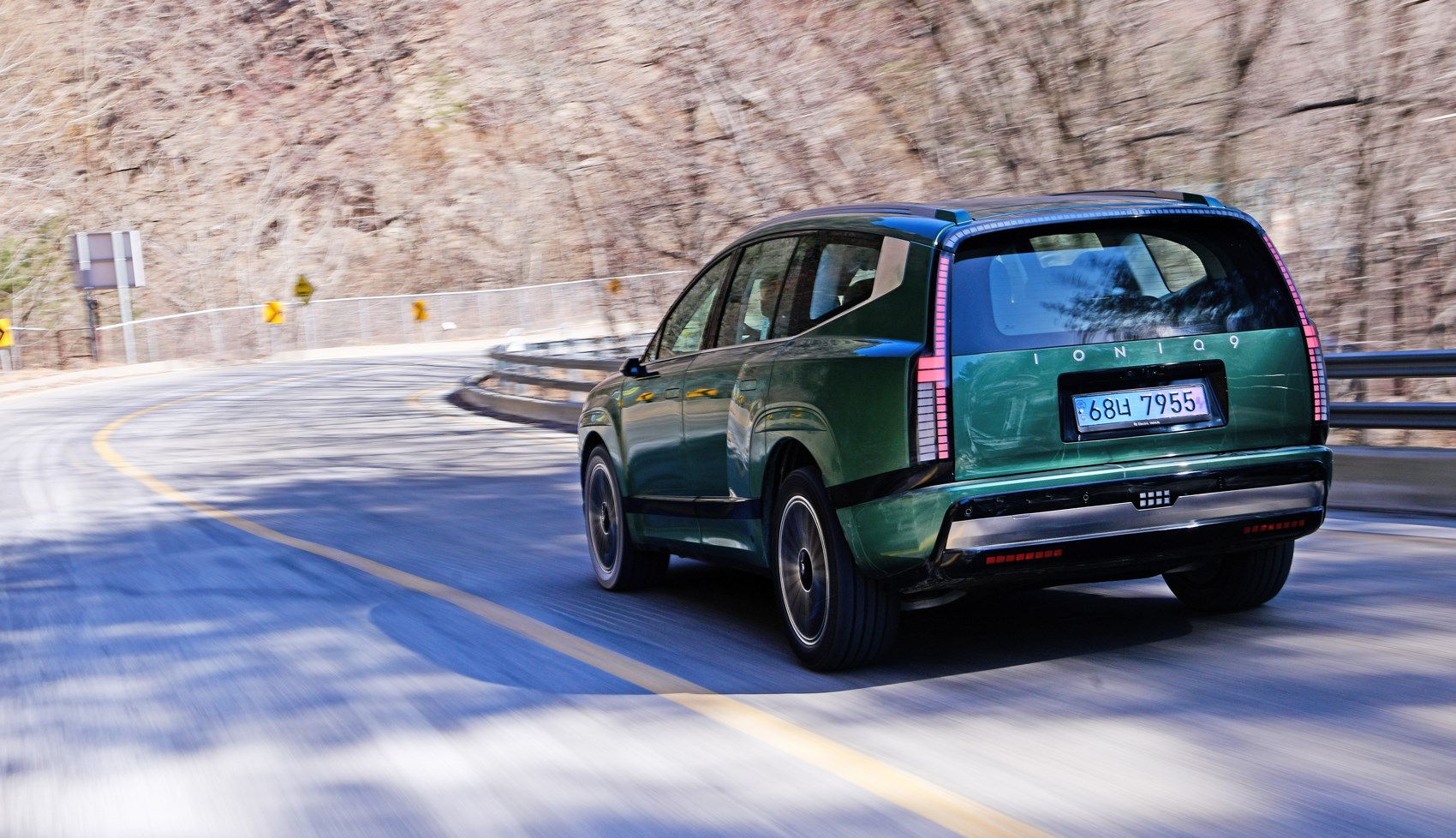
It does also feel like some improvements have been made over the prototype we drove in the California desert in late 2024. There, we grumbled that the steering had a bit of a dead-spot at the centre but here, in this production model, it appears to have been tightened up. It’s not twitchy or over-alert, but there feels like more clarity in your inputs than there was before.
And, of course, the amount of power from this top-spec AWD Performance model is plentiful. Even by EV standards, Hyundai’s nailed the smoothness of power delivery, without any twitchiness from the throttle and a well-defined ramp-up of power as you build speed. Frankly, this model is a little much, to the point we’d suggest just sticking with the Long Range AWD model instead – it’s still got plenty of power, but can achieve an even better range and we’d argue wouldn’t overwhelm the physical brakes so much.
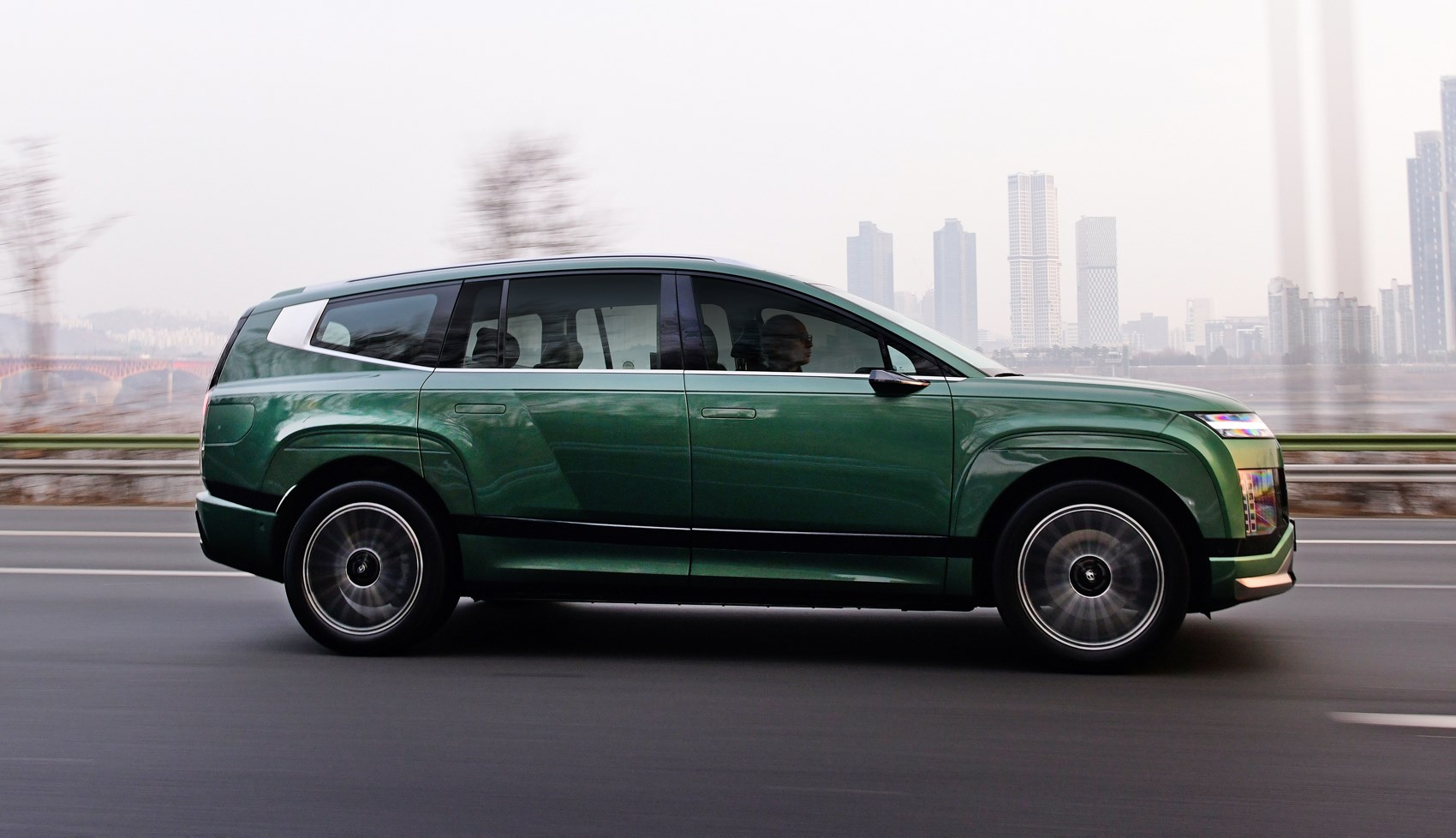
At speed, rolling refinement is impressive. We’d likely need more time to discern if windy days have a particularly big effect on this production model (it was blustery driving a camo’d prototype in the Cali desert, but winds were calm in Korea) but what did impress was the distinct lack of tyre noise – even on rough tarmac. The ability to have a conversation with those even at high speeds could be done without shouting.
It’s not a car that’s going to be a thrill ride, but it’s not designed to be one either. If anything, the Ioniq 9 will lower your heart rate – not raise it.
What’s the interior like?
Quite possibly the Ioniq 9’s party piece, given the immense flexibility built in. Plenty of thought has been put into the interior, with a great mix of physical switchgear and digital tech.
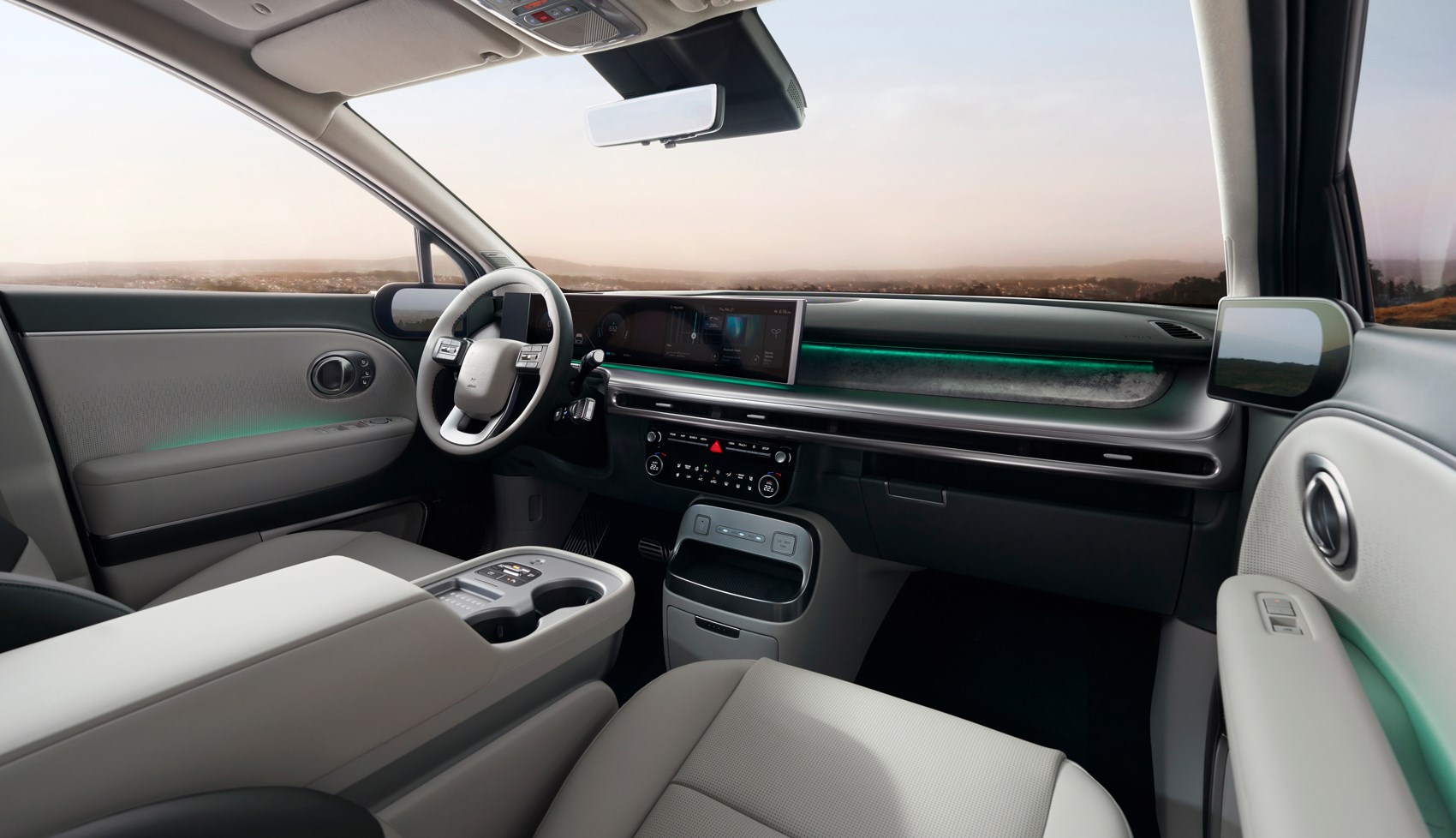
The dashboard itself has a single, wide and curved panel mounted on it that includes both the drivers’ instruments and central infotainment display. Welcome menu buttons and climate dials rest below for you to help navigate the displays, but the system is quite menu-heavy and not the easiest to navigate.
Most of the cabin trim feels solid and soft touch, with only those silvery bits on the dashboard feeling a bit tinny. Below the climate controls you have storage areas and, depending on spec, you can even equip a UV light storage area that’s supposedly meant to decontaminate your phone. Vehicle-to-load will also be available, allowing you to power things via domestic sockets.
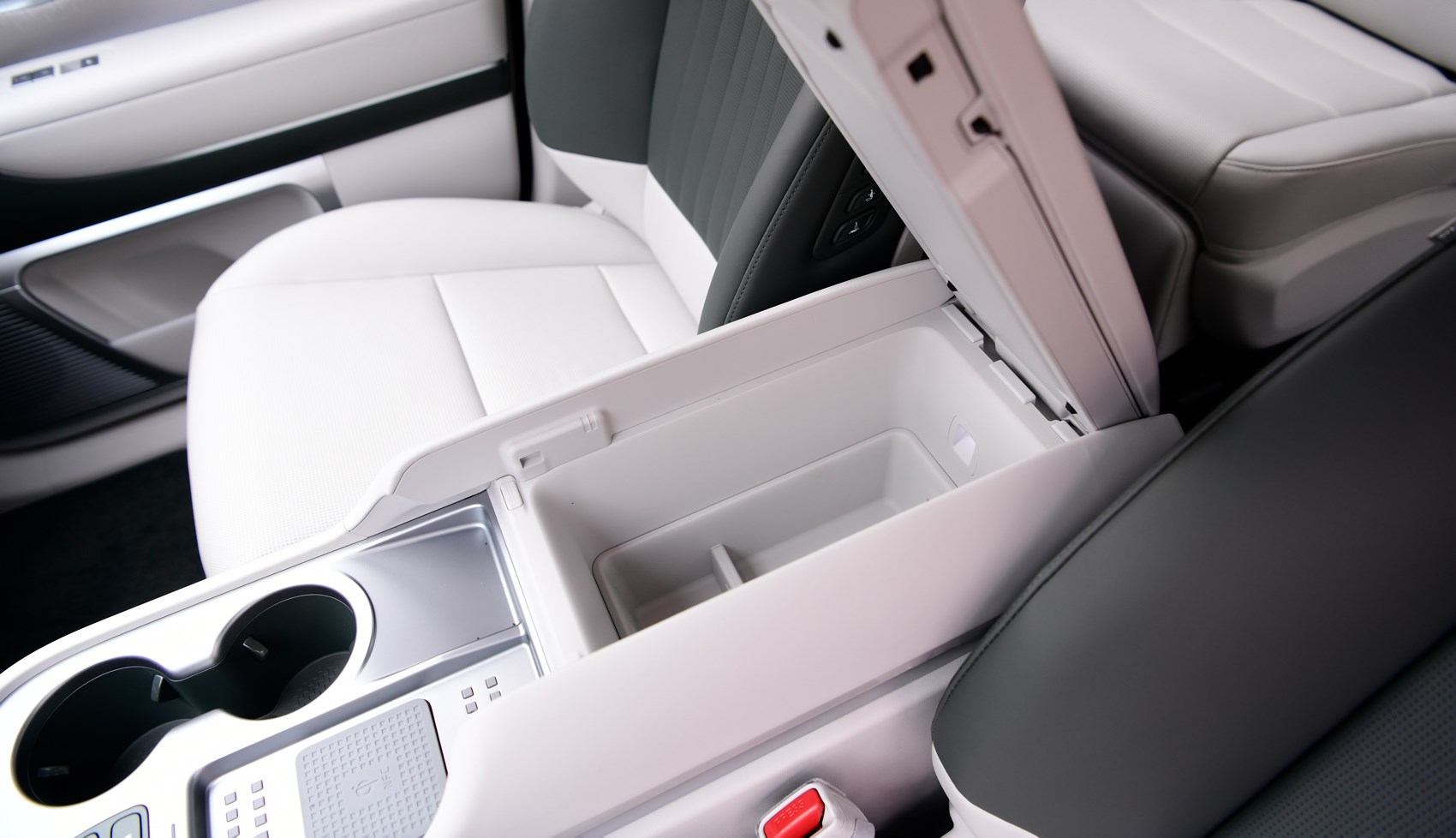
Splitting up the front seats is the new ‘Universal Island’ storage area. As well as some controls for driver aids and modes, this is where you’ll find cupholders, phone storage, drawers both at either end and a vast central storage area. It also slides fore and aft, providing you with the ability to make it more accessible for those in the second row.
The driving position is very adjustable and, despite it being a big car, you get a good sense of where you’re placing it on the road. We’re still not sure about the (thankfully optional) camera mirrors, though; granted, these are some of the smoothest we’ve used, but the aerodynamic benefits are arguably negligible and they’ll be a huge cost to replace if they’re damaged.
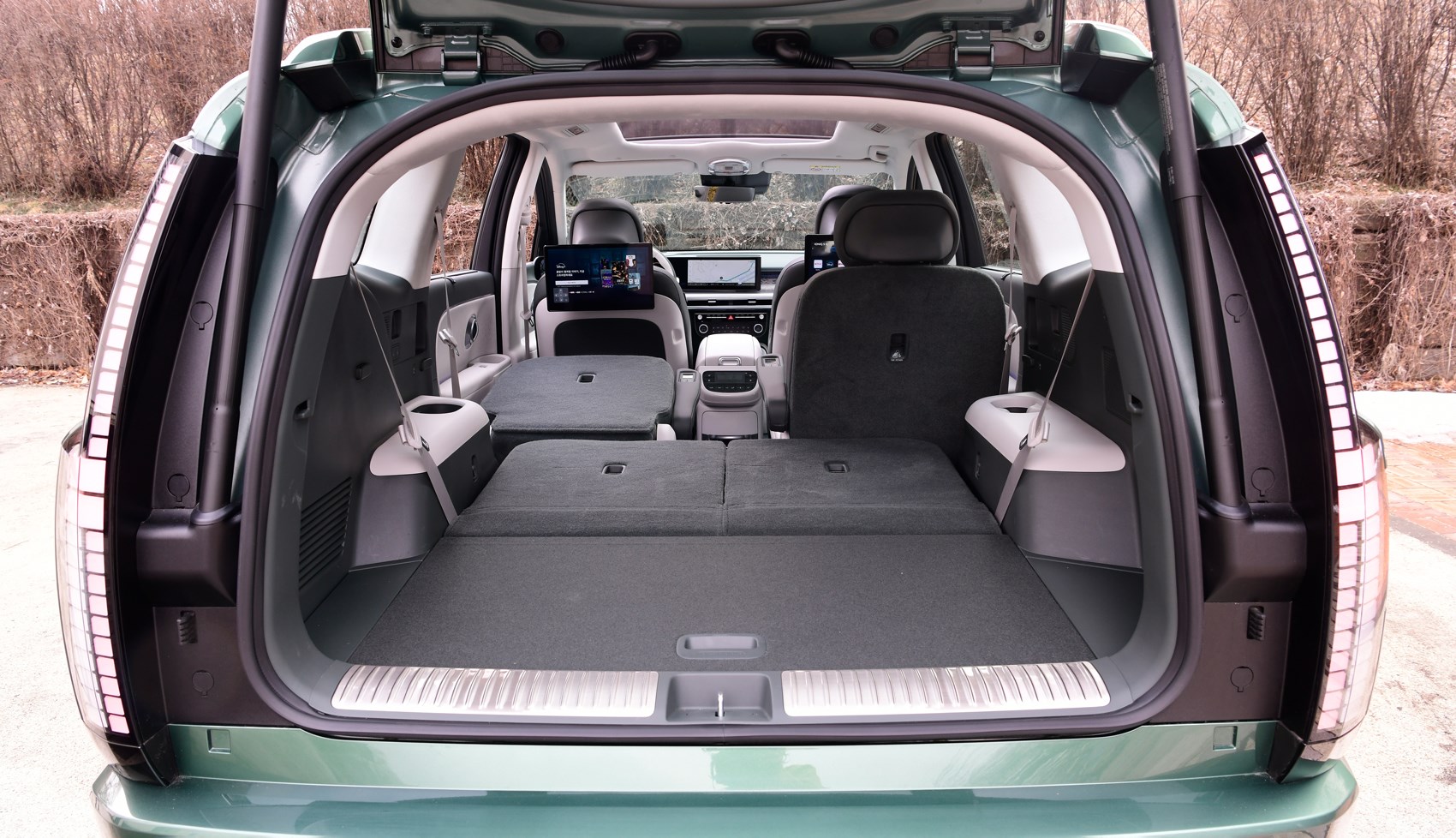
And the space! So much of it, no matter where you sit. I’ve been in business class flights with less room if you choose the six-seat option, with a huge amount of flexibility in the reclining seat functions. Even in the third row, there’s enough room for adults to handle moderate-length journeys, and everyone inside gets at least one cupholder and a charging port available to them. As you’d imagine, boot space is plentiful at 620 litres with all seats up. With all of them down, the 9 can act like a small van.
Before you buy
While UK prices aren’t confirmed yet, expect a list price structure similar to the Kia EV9 – its closest rival and Hyundai Motor Group sibling – so starting around £65k, and topping out below £80k. Compared to the Kia, the Ioniq 9 is still physically a large car but manages to hide its size much better; driving the EV9 by comparison feels like you’ve attached a steering wheel and pedals to a village hall. The Ioniq also rides better than its Kia sibling in its top spec.
And, even in its flashiest spec, the Ioniq 9 will almost certainly cost less than a basic Volvo EX90 – another electric seven-seat family SUV that’s brimming with plushness and kit. But I’d argue that the Ioniq 9 feels just as well built inside, perhaps even more practical and almost certainly more user-friendly than the Scandi… for less cash.

We wouldn’t be surprised, too, if those who currently own Range Rovers or a Range Rover Sport were looking at this and the EV9. Given how long JLR has delayed an EV version of its flagship, this Ioniq 9 will more than do the job an e-Rangie can do – and likely for half the price. Reading this and thinking the same? Overcome your badge snobbery and give it a look.
Verdict: Hyundai Ioniq 9
Again, I reiterate my earlier point – who’d have thought we’d be comparing a Hyundai to a Range Rover? But, in all seriousness, the Ioniq 9 will be deeply attractive to those looking for a grand, gracious and hugely flexible family SUV.
Aside from a couple of small grumbles – namely slightly weak brakes and a menu-heavy infotainment system – the Ioniq 9 is refined and smooth to drive, calming to be in and will tackle family life better than most other cars ever could. And when all of this can be done for less than an EX90, or the upcoming electric Range Rover, the Ioniq 9 feels like great value.
Specs are for Ioniq 9 Performance AWD